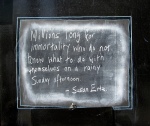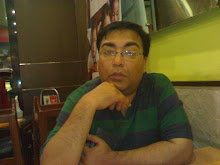 Many years ago when I worked at a hospital chain, our advertising agency had come up with a campaign featuring happy patients. The hospital wanted to showcase their doctors. The objective of the advertising was to showcase the hospital’s expertise and superior services and position it on the ‘care’ platform.
Many years ago when I worked at a hospital chain, our advertising agency had come up with a campaign featuring happy patients. The hospital wanted to showcase their doctors. The objective of the advertising was to showcase the hospital’s expertise and superior services and position it on the ‘care’ platform.
The advertising agency and the hospital had been at loggerheads on this. The agency was dead certain that showing hospital doctors in ad visuals was a bad idea. They had come up with the images of happy people, who had had wonderful experiences at the hospital. The copy proceeded to narrate the experience in glowing terms, capturing the essence of the hospital and making a point about its medical and other services. I had liked the ads, though I found them a little run of the mill. Nothing very extraordinary but steady communication, which made its point. It however never saw the light of the day.
In those days (and I suspect in many hospitals even today) the brand manager had to run the ads past the medical folks. The prevalent thinking was that the medical people will be able to spot bloomers and also come up with great suggestions and those could be incorporated in the communication. However, I quickly learnt that the reality was usually very different. Most medical folks had very little understanding of consumer facing communication, and most wanted themselves featuring in the ads. Many also wanted images of them operating on patients and were keen to showcase all the gory details of their glorious profession. Some even had suggestions on how ad copy headlines and even hospital logo was to be arranged. The advertising agencies hated this mutilation of their advertising and the brand manager had the task of balancing the demands of the doctor, the agency and the brand itself.
As I gained in experience, I realized that a lot of hospital advertising had very little to do with end consumers. Now, this may sound absurd, but let me explain. Often hospitals would hire high profile doctors committing huge marketing spends on promoting them and their specialities. This would be the understanding between the hospital bigwigs and the doctor concerned. Thus, a significant purpose of the advertising will be to keep the doctor in good humour and honour a commitment made to him. Thus the doctor would legitimately expect to feature in the communication and try and showcase his skills.
Unfortunately, even now one rarely comes across real ‘brand’ advertising in healthcare in India. Most hospitals still prefer to bet on individual doctors and shy away from investing in the hospital brand. New hospitals do a little ‘launch’ related advertising, however there too quite often one encounters a well known doctor prominently featured in the communication.
Recently I came across advertising for Alchemist Hospital in Gurgaon, featuring the well known cardiac surgeon Dr. P Venugopal. He was till recently the director of the All India Institute of Medical Sciences and has now joined Alchemist Hospital in Gurgaon. Max Healthcare announced the commencement of their cancer services leading in with the doctors they have hired. They also ran ads featuring Dr. Pradeep Choubey, a well known laparoscopic surgeon who has joined them from Sir Gangaram Hospital.As a consumer, why do I need to know how Dr. Choubey looks to understand that he has now moved from Sir Gangaram Hospital to Max Hopsital. Yes, as a consumer I would like to know how Dr. Choubey’s expertise and services makes Max Healthcare a better hospital.
Seeing these ads recently reminded me of my struggles as a young brand manager. Even after so many years, it seems in healthcare communication nothing much has changed.
Here is wishing everyone a Merry Christmas!!!
Pic courtesy www.istockphoto.com



 Websites of Indian hospitals are hardly something to write home about. They are mostly poorly done, difficult to navigate and usually the information lies buried so deep that it tests ones patience to get the relevant information . The other day, it took me close to 20 minutes and numerous clicks to locate the address of a hospital from its website. I needed the address to send a Diwali card to a friend who works at the hospital and try as I might, I just did not seem to find the address of the hospital.
Websites of Indian hospitals are hardly something to write home about. They are mostly poorly done, difficult to navigate and usually the information lies buried so deep that it tests ones patience to get the relevant information . The other day, it took me close to 20 minutes and numerous clicks to locate the address of a hospital from its website. I needed the address to send a Diwali card to a friend who works at the hospital and try as I might, I just did not seem to find the address of the hospital. A couple of weeks back I had written about my experiences at the Indraprastha Apollo Hospitals. Following the publication of that post, I received a call from the hospital. I must say I was very surprised. The caller was a lady who said she looked after service quality and was calling to learn more about my experiences at the hospital. While apologising for what we had to go through the hospital, she wanted more details and appeared keen to fix the problem. Subsequently I also received a call from my former colleague Usha Bannerjee, who presently heads nursing at the hospital. She too admitted that they have been having ’service’ issues and they are trying their best to rectify these.
A couple of weeks back I had written about my experiences at the Indraprastha Apollo Hospitals. Following the publication of that post, I received a call from the hospital. I must say I was very surprised. The caller was a lady who said she looked after service quality and was calling to learn more about my experiences at the hospital. While apologising for what we had to go through the hospital, she wanted more details and appeared keen to fix the problem. Subsequently I also received a call from my former colleague Usha Bannerjee, who presently heads nursing at the hospital. She too admitted that they have been having ’service’ issues and they are trying their best to rectify these. The Union Health Minister Ghulam Nabi Azad appears to be busy shooting the breeze by announcing vague policy changes involving setting up of Medical Colleges through private capital and in collaboration with government run district hospitals. The minister who is well known for putting his foot in the mouth, recently announced at a FICCI conference that the government is considering relaxing the norms for setting up medical colleges by the private sector. He also announced that these colleges can be affiliated with the government owned district hospitals, thus doing away with the requirement of a teaching hospital to be attached with the medical college.
The Union Health Minister Ghulam Nabi Azad appears to be busy shooting the breeze by announcing vague policy changes involving setting up of Medical Colleges through private capital and in collaboration with government run district hospitals. The minister who is well known for putting his foot in the mouth, recently announced at a FICCI conference that the government is considering relaxing the norms for setting up medical colleges by the private sector. He also announced that these colleges can be affiliated with the government owned district hospitals, thus doing away with the requirement of a teaching hospital to be attached with the medical college. The other day I landed at the Indraprastha Apollo Hospitals, a stone’s throw away from my residence in New Delhi. My wife needed a test and our doctor at Max Healthcare asked us to get it done at Apollo as the equipment at Max was out of order. The moment I walked in I felt as if I was on a railway platform. The hospital was full of patients as everybody appeared to be in a mad rush. In the OPD area, the ladies at the reception were busy, chatting amongst themselves, while patients and their caregivers waited for their attention. They wore no uniforms and for some strange reason, they were also collecting cash from the patients (apparently for the doctor’s consulting charges) and handing out receipts scribbled on small chits, which did not even have the hospital’s name on it.
The other day I landed at the Indraprastha Apollo Hospitals, a stone’s throw away from my residence in New Delhi. My wife needed a test and our doctor at Max Healthcare asked us to get it done at Apollo as the equipment at Max was out of order. The moment I walked in I felt as if I was on a railway platform. The hospital was full of patients as everybody appeared to be in a mad rush. In the OPD area, the ladies at the reception were busy, chatting amongst themselves, while patients and their caregivers waited for their attention. They wore no uniforms and for some strange reason, they were also collecting cash from the patients (apparently for the doctor’s consulting charges) and handing out receipts scribbled on small chits, which did not even have the hospital’s name on it. The Delhi High Court has been after private hospitals in Delhi to honour their commitments regarding the treatment of the poor, but sadly to no avail. The hospitals are just not willing to treat poor for free, a condition that they agreed to while accepting land from the government at hugely subsidised rates. In-spite of the Delhi high court directing the hospitals time and again to fill up the beds for the poor, the hospitals are dragging their feet by hiding behind every legal loophole that they can find.
The Delhi High Court has been after private hospitals in Delhi to honour their commitments regarding the treatment of the poor, but sadly to no avail. The hospitals are just not willing to treat poor for free, a condition that they agreed to while accepting land from the government at hugely subsidised rates. In-spite of the Delhi high court directing the hospitals time and again to fill up the beds for the poor, the hospitals are dragging their feet by hiding behind every legal loophole that they can find. While trawling the net I came across a blog (
While trawling the net I came across a blog ( Immortality seems to be staring the human race in the face. If one was to believe the ‘futurist’ (never knew what this meant till recently) Mr. Ray Kurzweil, mankind will find a permanent solution to the scourge of dying and that too, not in too distant a future. Mr. Kurzweil believes that by 2029, that is in just 20 more years, man will conquer the final frontier in medicine and will be able to continue to live forever.
Immortality seems to be staring the human race in the face. If one was to believe the ‘futurist’ (never knew what this meant till recently) Mr. Ray Kurzweil, mankind will find a permanent solution to the scourge of dying and that too, not in too distant a future. Mr. Kurzweil believes that by 2029, that is in just 20 more years, man will conquer the final frontier in medicine and will be able to continue to live forever. A recent cover story in Business World highlights the growing influence of Single Speciality Hospitals (SSH) in India. I read the story carefully. First and foremost, I was delighted to see a cover on healthcare in Business World. It is not often that the business of healthcare gets prominence in a widely circulated and highly respected business weekly. That, BW decided to do this story is a testimony to the growing importance of the private healthcare sector, which is something to cheer about.
A recent cover story in Business World highlights the growing influence of Single Speciality Hospitals (SSH) in India. I read the story carefully. First and foremost, I was delighted to see a cover on healthcare in Business World. It is not often that the business of healthcare gets prominence in a widely circulated and highly respected business weekly. That, BW decided to do this story is a testimony to the growing importance of the private healthcare sector, which is something to cheer about. The whole of the last week The Hindustan Times carried a series of stories highlighting incidents of 'negligence' in high profile private hospitals in Delhi. The hospitals featured included Fortis Escorts Hospital, Max Hospitals, Apollo Hospital, Sir Gangaram Hospital and Rajiv Gandhi Cancer Hospital. Now these hospitals in Delhi are the best that we have. While, Hindustan Times has a right to expose cases of negligence in hospitals I am still not sure what purpose was served by these reports.
The whole of the last week The Hindustan Times carried a series of stories highlighting incidents of 'negligence' in high profile private hospitals in Delhi. The hospitals featured included Fortis Escorts Hospital, Max Hospitals, Apollo Hospital, Sir Gangaram Hospital and Rajiv Gandhi Cancer Hospital. Now these hospitals in Delhi are the best that we have. While, Hindustan Times has a right to expose cases of negligence in hospitals I am still not sure what purpose was served by these reports. Swine flu has finally arrived in India.
Swine flu has finally arrived in India. Here is an interesting exercise that I recommend hospital marketers to try out with their colleagues in the hospital. Select a group of 30 individuals working in the hospital, preferably those who handle customers. Include in the group a few medical folks, doctors, nurses, front office executives, billing executives, F&B personnel and a few guys from housekeeping. Ask them simple questions on what the hospital brand means to them.
Here is an interesting exercise that I recommend hospital marketers to try out with their colleagues in the hospital. Select a group of 30 individuals working in the hospital, preferably those who handle customers. Include in the group a few medical folks, doctors, nurses, front office executives, billing executives, F&B personnel and a few guys from housekeeping. Ask them simple questions on what the hospital brand means to them.